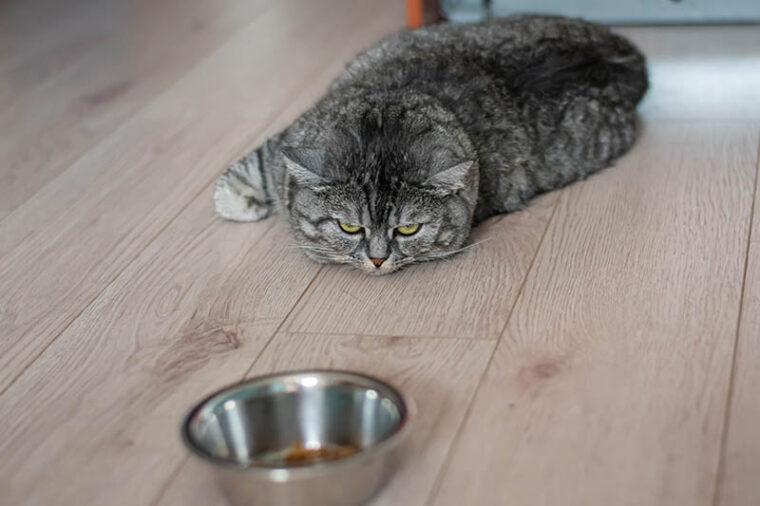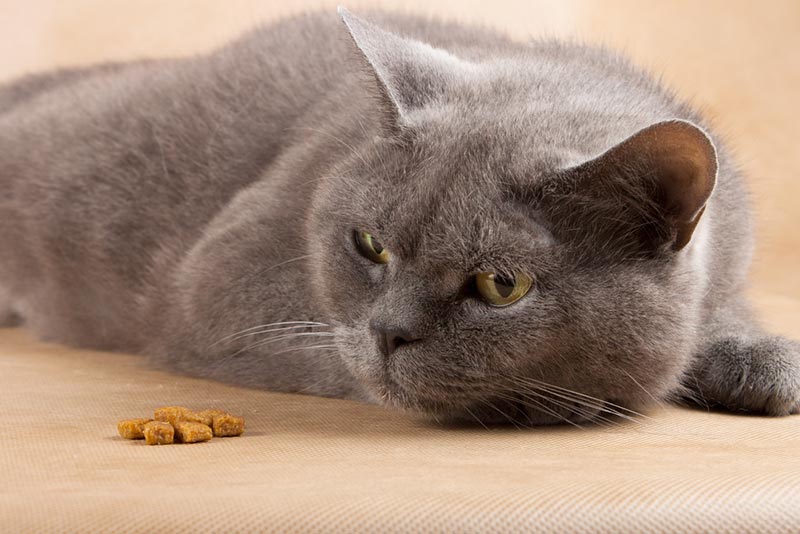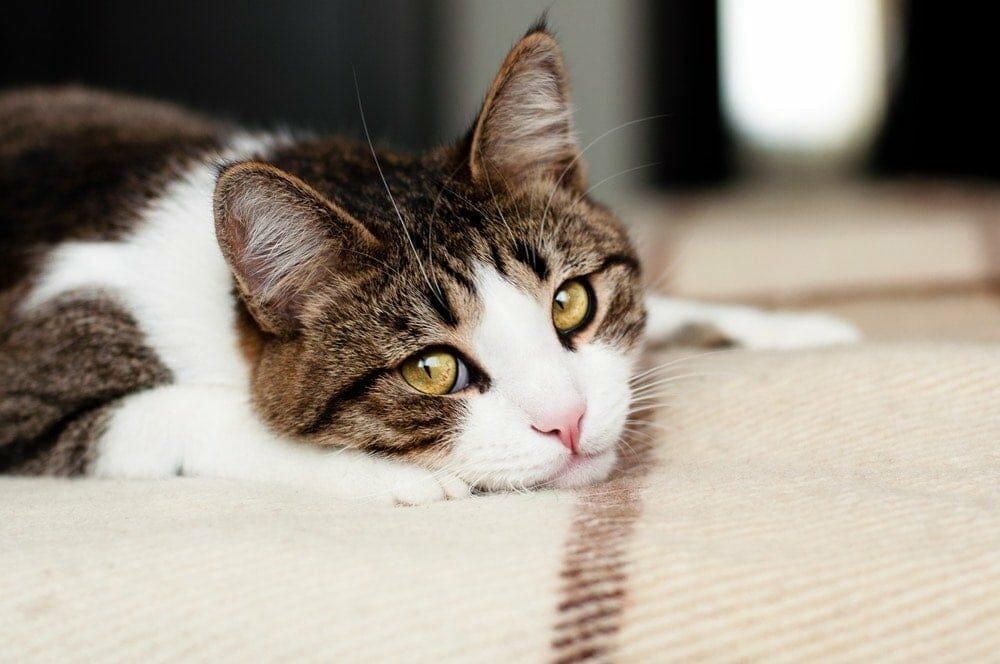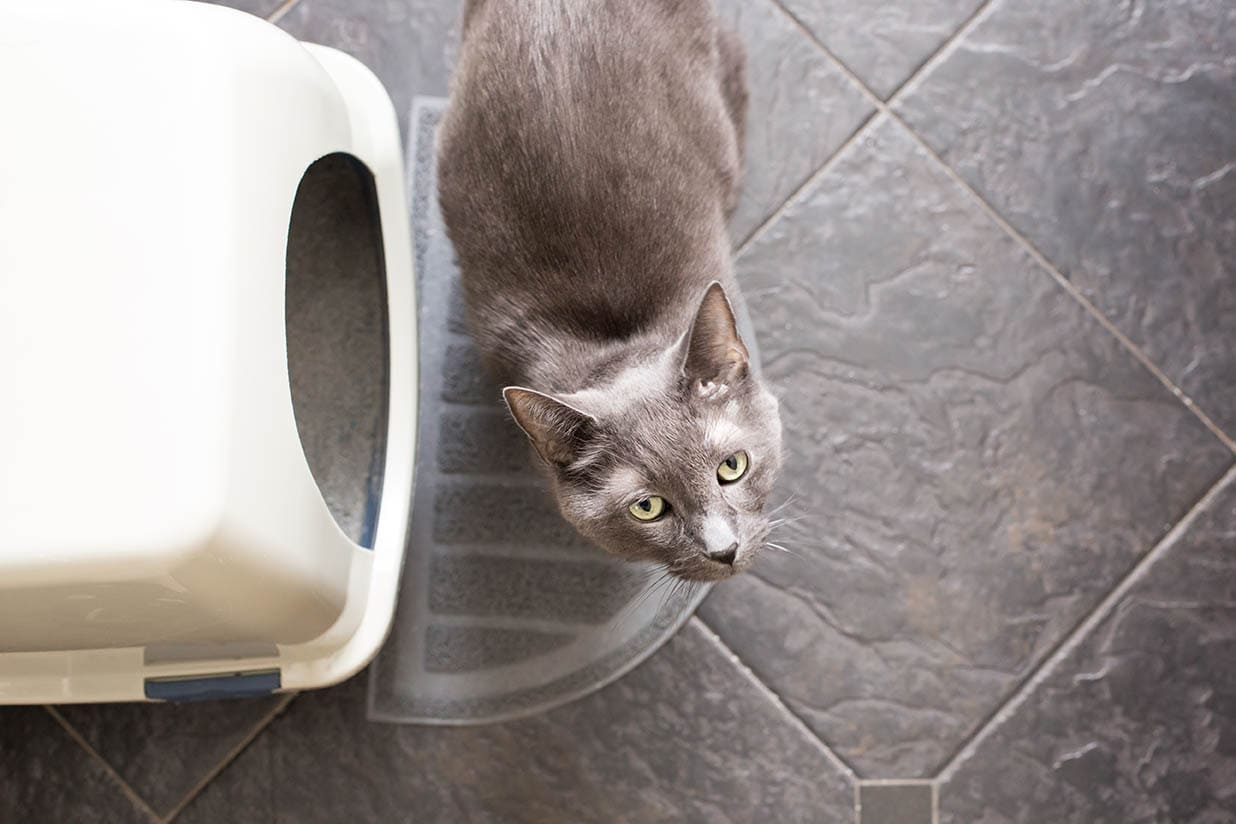
Click to Skip Ahead
While moving house can be an exciting time, it can also cause stress for the whole family, including your pets. If you have noticed the contents of your cat’s bowl not changing since you moved to your home, it could mean that the process and change are causing it not to eat.
It is normal for your cat to become stressed when its routine is changed, and not eating is one way the stress can manifest.
Is It Normal for a Cat to Stop Eating After Moving?
Yes, it is common for cats to stop eating after moving. When your pet’s appetite seems off, even for a short period, it is concerning, but there could be several reasons your cat isn’t eating. Stress is most likely to blame if you’ve recently moved and your cat hasn’t eaten in a day.
Cats are cautious animals that are extremely sensitive to changes in their environment and routine. Even in the best circumstances, this life change is extremely disruptive and can take some time to settle in. All the familiar smells and safe spots are now gone, and your cat needs to adjust.
This stress can be the reason your cat has stopped eating and should usually improve after two days. You should consult your vet if your cat has stopped eating for more than two days or sooner if they seem unwell at all.

What to Do If Your Cat Has Stopped Eating
If your cat isn’t eating after you move, minimizing your cat’s anxiety will help them get through this difficult time as quickly as possible. The most important thing you can do is show consideration.
Bring your cat’s favorite toys and blankets, and place them where you believe your cat will feel safe. After the move, remember to unpack your cat’s litter box first and show your cat where it is.
Ensure your cat is warm and has plenty of water and food. You should take your cat to the veterinarian if it displays symptoms such as vomiting, diarrhea, fatigue, or weight loss. These signs are not usually associated with moving home.
Provide hiding spaces up high and down low like under a bed to give the option to retreat if they feel worried.
Try to engage them in calming activities dependent on their personality such as petting, grooming or playing. Licking is also a calming activity so try a licki mat with their favorite soft food on it.
You may find that your cat will eat overnight when all the hustle and bustle of the house has settled. If you have any concerns about your cat’s welfare contact your veterinarian.
High-quality cat food is an important part of fostering a long and healthy life for your cat but the right cat food and water dish will promote good posture, offer whisker relief, and aid in good digestion. The Hepper NomNom Cat Bowl is our favorite bowl since it offers all of the above and is beautifully crafted to meet modern home stylings. The wide tray design catches any food and water spills and the entire setup is dishwasher safe. Learn more about the Hepper NomNom Cat Bowl here.
At Pet Keen, we’ve admired Hepper for many years and decided to take a controlling ownership interest so that we could benefit from the outstanding designs of this cool cat company!
Other Signs Your Cat is Stressed
Other tell-tale signs will indicate your cat is stressed, and a lack of appetite is just one of them.
Isolation
Aloofness is a well-known trait of cats, but they should not actively hide from you in the house. When cats are stressed, they tend to hide away. They are likely trying to feel comfortable and safe by isolating themselves. After a short time, they should feel safe enough to come out of hiding and explore their new surroundings.

Excessive Grooming and Scratching
Cats are known for their meticulous grooming, but licking themselves excessively in a symmetrical pattern can indicate distress. Keep an eye on your cat for over-grooming or scratching; it could indicate a skin health issue, but if it aligns with the move to a new home, it can likely be a stress reaction. If your cat persists with overgrooming, get an appointment with your vet soon.
Excessive Vocalization
If your cat has been more vocal since the move, it could also be a sign of stress. Excessive meowing can be for attention or if they are trying to find you in an unfamiliar environment.
Urinating Outside the Litterbox
Cats that urinate outside the cat litter box may be anxious because of the move. Remember that if you’ve moved, the litter box may no longer be in its usual familiar location, which may take some getting used to. However, it should be noted that stress can result in cystitis in cats, so give the veterinary clinic a call if you have any concerns.

Changes in Behaviour
A change in routine and surroundings can make your cat feel insecure and uneasy, causing them to act out of character. Cats who are more aloof are more likely to withdraw, and those who are clingier and more social with their owners may become even more so during stressful situations. Even the friendliest cats can become distant during stressful times.
How to Help Your Cat Adjust to the Move
While stress is usually inherent during a move, following these tips can help your cat adjust and reduce stress.
Before the move, get your cat used to its carrier, so it becomes a familiar and safe space for it during the move. Once you have moved to your new home and safely moved your kitty, place the carrier in a quiet room. Also make use of feline pheromone diffusers in the new home if possible. This will help to make the new home smell familiar to your cat.
Introduce your cat one room at a time. Choose a smaller room that provides some familiarity and place items with familiar scents in the room. You can keep their litter box and food and water bowls in the same room initially to give them time to adjust without being confined to the crate. During this time, try not to make any more significant changes to your cat’s things.
Keep their original litter box, use the same type of litter they’re used to, and don’t change their diet. If possible, continue to feed your cat at regular times. If you set aside time for grooming and cuddles each day, try to stick to that routine to help your cat feel less disoriented.
Some cats experience such high levels of stress that it is best to consult their veterinarian for professional advice. There are some over-the-counter and prescription medications and foods that can help in stressful situations, and medication may be required in more severe cases to help relax them.

Conclusion
If you have just moved into a new home and your cat has stopped eating, it could well be due to stress. You know that moving is an unsettling process, and your cat can also feel the anxiety around it. Monitor your cat and its behavior; if its actions are out of the ordinary and your cat hasn’t eaten for more than two days, you should contact your vet as soon as possible. Just remember to try and keep your cat’s new environment as familiar as possible and provide plenty of love and cuddles.
Featured Image Credit: Kitirinya, Shutterstock









